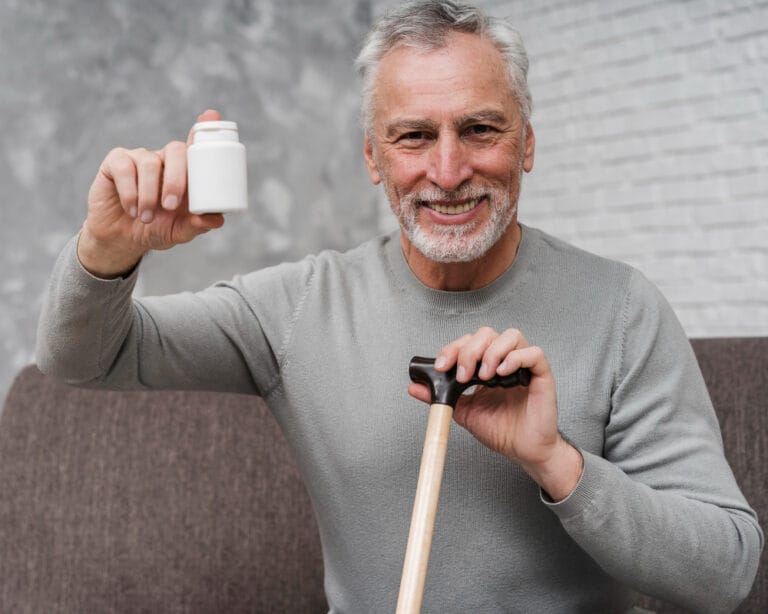FREE SHIPPING OVER $50
The #1 Exercise Strategy for Managing PCOS—And Why Most Women Do It Wrong

If you live with PCOS (Polycystic Ovary Syndrome), you know the challenges well: stubborn weight gain, unrelenting fatigue, chronic cravings, and hormonal imbalance. When trying to manage these symptoms, many women are told to simply “do more cardio” or “cut calories.” While cardiovascular exercise is important for health, it is not the #1 exercise strategy for tackling the root metabolic issue of PCOS. The real secret lies in a form of strength training often overlooked by those aiming for simple weight loss.
The most effective tool for managing the symptoms of PCOS is consistent, proper resistance training, specifically using compound movements. This strategy directly addresses insulin resistance and builds muscle, the two most crucial factors in controlling the condition. Unfortunately, many women with PCOS perform their strength training incorrectly—or skip it entirely—focusing instead on isolation exercises or excessive, low-intensity cardio. This is the painful truth: if you’re doing PCOS exercise wrong, you’re missing out on the most powerful, drug-free way to improve your hormonal health and metabolism.
The Metabolic Connection: Why PCOS Demands Muscle
PCOS is often fundamentally a metabolic disorder driven by insulin resistance. This means your cells don’t respond well to insulin, forcing your pancreas to pump out more and more of the hormone. High insulin levels then trigger the ovaries to produce excess androgens (male hormones), leading to many common PCOS symptoms like acne, weight gain, and hair growth.
Muscle is Your Insulin Sponge
Here’s where compound movements come in: Muscle tissue is your body’s biggest user of glucose (sugar). The more muscle you build, the more receptors you create on your cells to absorb glucose efficiently. When you use your muscles, they become incredibly sensitive to insulin, effectively lowering the amount of insulin circulating in your bloodstream. This reduction in insulin is the first step toward balancing hormones and mitigating PCOS symptoms.
The #1 Strategy: Compound Movements
The most effective way to build the most metabolically active muscle is through compound movements—exercises that work multiple large muscle groups and multiple joints simultaneously.
Why Compound Excercises Win Over Isolation
- Maximum Muscle Recruitment: A compound movement like a squat engages your glutes, quads, hamstrings, and core all at once. An isolation exercise, like a leg extension, only targets one. Using more muscle recruits more glucose receptors, providing a stronger anti-insulin resistance effect.
- Hormonal Boost: Heavy compound movements trigger a far greater natural release of beneficial hormones like Human Growth Hormone (HGH) and testosterone (which helps women build muscle and doesn’t cause masculinization at normal levels).
- Time Efficiency: You get maximum calorie burning and muscle-building benefits in the shortest amount of time, making it sustainable for a busy lifestyle.
Why Most Women with PCOS Do It Wrong
The biggest error is failing to incorporate enough compound movements or performing them at the wrong intensity.
Mistake 1: Too Much Low-Intensity Cardio
Many women fear lifting heavy weights and default to hours on the elliptical or treadmill. While steady-state cardio has benefits, it does not significantly build the muscle mass necessary to fundamentally change insulin sensitivity. You can improve your cardiovascular health, but your core PCOS mechanism remains largely unaddressed.
Mistake 2: Focusing on Isolation Exercises
Hours spent on inner/outer thigh machines or constant bicep curls are not the answer. These isolation exercises fail to recruit enough muscle mass to generate the powerful systemic, hormonal, and metabolic change required for PCOS management.
Mistake 3: Lifting Too Light (Not Challenging the Muscle)
If you can easily complete 15 to 20 repetitions of a lift without feeling a significant challenge, the weight is too light. To trigger the muscle-building and metabolic response needed to combat PCOS, you must lift a weight that allows you to complete only 6 to 12 high-quality repetitions. The last 2 reps should feel difficult.
The 4 Essential Compound Movements for PCOS Management
To correct your PCOS exercise strategy, shift your focus to these four pillars of compound movement. Aim for 3 sets of 8 to 12 repetitions for each exercise with a challenging weight.
1. The Squat (The Metabolism Engine)
The squat uses the three largest muscle groups in the body—the quads, hamstrings, and glutes—to their maximum potential.
- PCOS Benefit: Maximizes glucose uptake by recruiting the most amount of muscle tissue simultaneously.
- Form Focus: Keep your chest up, look straight ahead, and push your hips back as if sitting in a chair. Ensure your knees track in line with your feet.
2. The Deadlift (The Hormone Stabilizer)
The Deadlift is a total-body move that stabilizes the core and works the entire posterior chain, giving you the biggest hormonal and metabolic bang for your buck.
- PCOS Benefit: Its intensity triggers a strong hormonal response that is beneficial for systemic metabolism and strength building. It also builds the crucial deep core strength needed for posture and stability.
- Form Focus: Maintain a neutral spine. Hinge at the hips, keeping the weight close to your shins. Drive up using the glutes and hamstrings, not your lower back.
3. The Chest Press or Push-Up (Upper Body and Core Integration)
Whether done with dumbbells on a bench or using your bodyweight for a push-up, this move integrates your upper body and core.
- PCOS Benefit: Strengthens the chest, shoulders, and triceps while forcing the core to stabilize against movement, adding to your overall muscle mass and energy output.
- Form Focus: Keep your wrists straight and your elbows tucked slightly inward (about 45 degrees) during the descent. For push-ups, keep your body in a straight line from head to heels.
4. The Row (Postural and Metabolic Balance)
The Row (using dumbbells, a cable machine, or a resistance band) is crucial for balancing the often-weak upper back muscles.
- PCOS Benefit: Improves posture (countering the forward slump from sitting) and adds significant muscle to the upper back, contributing to overall metabolic demands.
- Form Focus: Drive your elbow back, squeezing your shoulder blade toward your spine. Avoid shrugging your shoulders up toward your ears.
Making the Strategy Work: Consistency and Recovery
The PCOS management breakthrough comes not from the gym session itself, but from the cumulative effect of these compound movements on your body’s hormonal environment during recovery.
The Recovery Window
Muscle building happens outside the gym. Ensure you prioritize two things:
- Protein Intake: Consume 20-30 grams of protein immediately after your workout to maximize muscle protein synthesis. This fuels the growth of the new, glucose-hungry muscle tissue.
- Sleep: Quality sleep is non-negotiable, as this is when the body naturally releases HGH and performs the majority of its cellular repair and hormonal balancing.
When to Use Cardio
Cardio should complement, not replace, your strength training. Use light cardio (walking, swimming) for stress management and to enhance recovery on off-days, not as the primary weight loss driver. Schedule two to three strength training sessions per week focused entirely on these compound movements.
Conclusion
For women managing PCOS, the #1 exercise strategy is clear: ditch the low-impact routines and ineffective isolation exercises, and embrace compound movements. By consistently challenging your major muscle groups with exercises like the Squat and Deadlift, you fundamentally change your metabolic health. You build the muscle mass needed to combat insulin resistance, stabilize your hormones, and achieve sustainable weight loss. Stop doing it wrong; start lifting heavy, lifting correctly, and finally gain the fitness and health control you deserve.
Related Articles
- Struggling With Balance? This 1 Daily Habit Could Keep You Steady for Life
- Fix Your Posture at Home With These 5 Back Moves—No Equipment Needed
- Sick of Chronic Migraines? These 6 Yoga Moves + Breathwork Could Be Your Natural Relief
- Trainers Swear By This 20-Minute Walk Trick to Melt Belly Fat Fast—No Gym Needed
- Stop Doing Planks! The 5 Bodyweight Moves That Guarantee a Smaller Waist After 40



